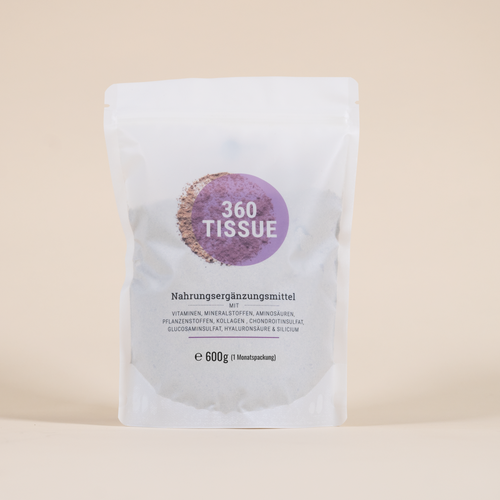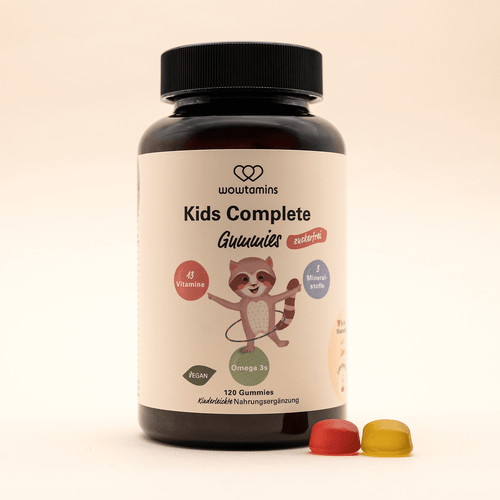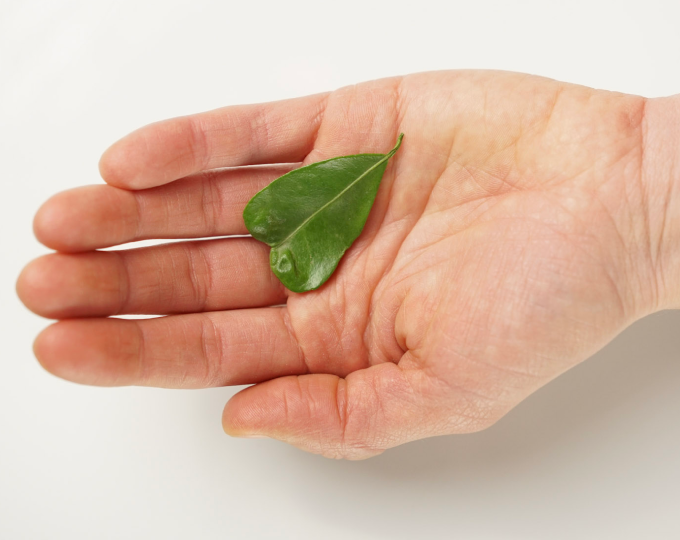Themen dieses Blogartikels:
What is vitamin b7?
Vitamin B7 is a water-soluble vitamin and belongs to the group of B vitamins. The medical name is biotin.
What are the functions of vitamin b7?
Biotin is often touted as a vitamin for beautiful skin, hair and nails. In fact, biotin is needed for the formation of keratin1. This is a structural protein that is the main component of hair and nails. Biotin can do much more. Like many other B vitamins, it is an important coenzyme in energy metabolism. Biotin is involved in the synthesis of fatty acids, the breakdown of amino acids and the formation of glucose in the liver and muscles2. Glucose is formed in the liver, for example, when the body is in a post-absorptive metabolic state, i.e. when it has not eaten for a long time. The liver then produces glucose and releases it into the blood. The blood sugar level remains constant and the brain continues to receive glucose for energy metabolism. As part of enzymes, vitamin B7 naturally also supports the nervous system and the psyche.3
What makes vitamin b7 unique?
Some intestinal bacteria can produce biotin themselves and thus supply it to human cells4. Biotin is also crucial for histone modification in the cell nucleus. Our DNA is wound on these histones, which are special proteins. Among other things, these proteins regulate the gene activity of many genes. Biotin is involved in the regulation of gene expression of over 2,000 genes. In total, humans have around 23,000 genes. Many of these gene products are probably active in signal transduction, i.e. communication between cells and the pathway of hormones. Gene regulation may also be relevant in the case of existing DNA damage as a signal for DNA repair5. The exact mechanisms have not yet been clarified and this is the task of current research.
How much vitamin b7 do you need per day?
According to the German Nutrition Society (DGE), the estimated values for an adequate biotin intake are as follows7:
| Age | Biotin µg/day |
| Infants | |
| 0 to under 4 months | 4 |
| 4 to under 12 months | 6 |
| Children and teenagers | |
| 1 to under 4 years | 20 |
| 4 to under 7 years | 25 |
| 7 to under 10 years | 25 |
| 10 to under 13 years | 35 |
| 13 to under 15 years | 35 |
| 15 to under 19 years/td> | 40 |
| Adults | |
| 19 to under 25 years | 40 |
| 25 to under 51 years | 40 |
| 51 to under 65 years | 40 |
| 65 years and older | 40 |
| Pregnant women | 40 |
| Breastfeeding | 45 |
When do you need vitamin b7 most?
Biotin can be helpful during intermittent fasting and normal fasting over several days, as it supports gluconeogenesis and thus better glucose or glucose precursors for the ketone bodies can be provided6. If you value your hair health, a sufficient supply of biotin is also important.
How does an vitamin b7 deficiency develop and how does it manifest itself?
A deficiency is very rare in industrialized countries, as people there usually absorb enough biotin through their diet. If a deficiency occurs despite a balanced diet, it may be due to a rare, congenital enzyme deficiency or a shortened small intestine. In addition, eating large quantities of raw chicken eggs can lead to a biotin deficiency8. Possible symptoms include a scaly skin rash, torn corners of the mouth and a general feeling of weakness. In infants, a biotin deficiency can lead to developmental disorders, and a connection with sudden infant death syndrome is also being discussed.9
What happens if there is an overdose of vitamin b7?
No toxic effects have been observed to date. There is therefore no upper limit for the daily intake of biotin.10
Which foods are particularly high in vitamin b7?
Many foods contain biotin. Yeast, mushrooms, egg yolk, wheat bran, soy and oats, for example, contain a good portion of vitamin B7.
This dictionary entry is based on carefully researched sources:
Bibliography & Sources
- https://www.dge.de/forschung/referenzwerte/biotin/
- https://flexikon.doccheck.com/de/Biotinlack
- https://www.gesundheit.gv.at/leben/ernaehrung/vitamine-mineralstoffe/wasserloesliche-vitamin/biotin.html
- https://www.bfr.bund.de/cm/343/aktualierte-hoechstmengevorschlaege-fuer-vitamin-und-mineralstoffe-in-futterrgaenzmitteln-und-anerreichten-lebensmittel.pdf

























